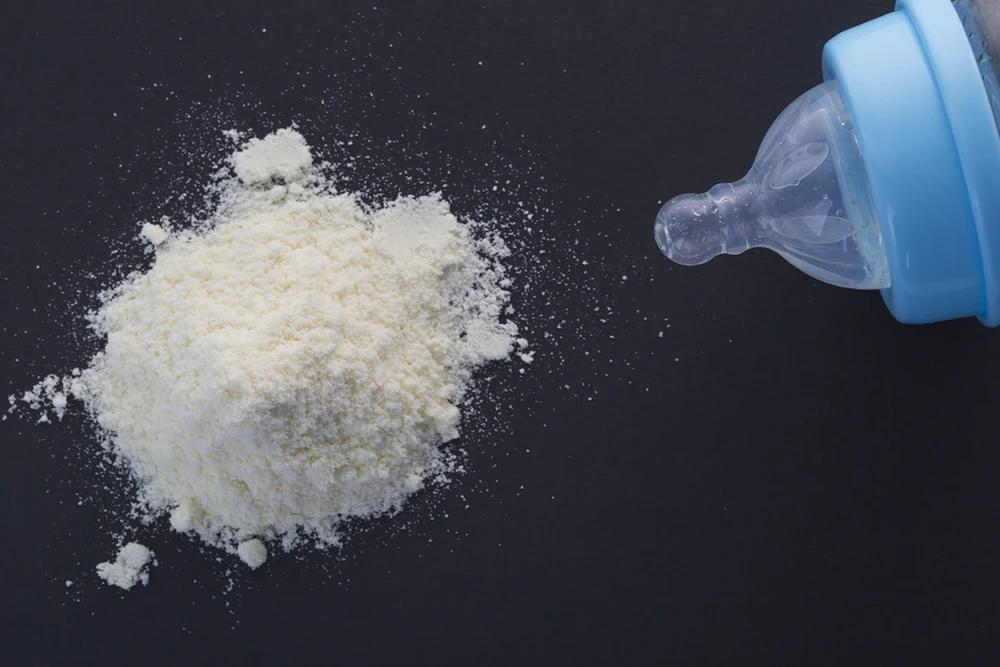Primary Necrotizing Enterocolitis Stages in Premature Infants
By: Simon Law | November 15, 2021

Necrotizing enterocolitis (NEC) is an intestinal condition that primarily affects premature and medically fragile infants caused by many factors, such as anatomical abnormalities in the baby’s intestine or lack of oxygen to the intestine. Now, through years of clinical studies and research by the nation’s leading physicians, the causes of NEC are becoming increasingly clear. One such cause, which is completely preventable, is the use of bovine, or cow’s milk, fortifiers that may be added to formula or breast milk at the hospital to help low birth-weight babies gain weight. There is a link in some cases between the bovine fortifiers and NEC. The purpose of this article is not to invoke fear, but to educate about the link between bovine fortifiers and NEC, and the signs and stages of NEC so parents can be aware of any changes in their baby’s behavior. If you and your baby had to suffer the hardship of this condition, our NEC attorneys can help you find representation.
3 Stages of Necrotizing Enterocolitis
There are three stages of NEC that have been adapted by Dr. Martin Bell, a leading physician in this field of study. These stages have been developed and separated to reflect the clinical changes and radiographic findings that require different treatment plans.
Stage One:
Common clinical signs are lethargy, temperature instability, vomiting, and abdominal distension. Additional symptoms may include rectal bleeding, blood in the child’s vomit, or a slow heartbeat. Radiographic findings are consistent with intestinal dilation. In Stage One, common treatments are oral feeding cessation, antibiotics, and nasogastric tube suction.
Stage Two:
Stage Two is confirmed NEC, with radiographic findings showing proven NEC in the form of intestinal dilation, portal venous gas, and/or pneumatosis intestinalis. Additional clinical signs are metabolic acidosis, abdominal tenderness, absent bowel signs, and low blood platelet counts. In this stage, treatment options are the same as Stage One, but with additions to attack the metabolic acidosis.
Stage Three:
Stage Three NEC is considered an advanced stage. In this stage of illness, there is a separation for whether the bowel is intact or perforated, Stages IIIA and IIIB, respectively. In Stage IIIA NEC, clinical signs include all the above symptoms but can also include low blood pressure, combined respiratory and metabolic acidosis, low white blood cell counts, abnormal blood clotting, and/or respiratory arrest. Radiographic findings include ascites, which are when fluid collects in the abdominal space. This must be treated quickly as the fluid can move into the space around your child’s lungs. Common treatments are the same as with Stages One and Two but also look toward the respiratory and cardiac systems, including inotropic agents to change the force of the heart’s contractions.
In Stage IIIB, the bowel has been perforated and requires immediate surgery. Clinical signs are the same as Stage IIIA and radiographic findings are the same, but usually with pneumoperitoneum – the presence of air or gas in the abdominal cavity.
What To Do If You Suspect NEC
No matter the stage of your child’s NEC, if bovine fortifiers were the cause, then it was completely preventable and the hospital and doctors responsible must be held accountable. In a situation where you suspect your child has NEC, seeking immediate medical attention is necessary to achieve the best possible outcome. Upon treatment of NEC, children can experience short bowels syndrome, prolonged hospitalizations, significantly impaired growth, and poor long-term neurodevelopment. The birth injury attorneys at The Simon Law Firm, P.C. are experienced in NEC cases and will hold the proper individuals and entities accountable for the preventable harm committed. In such cases, it is important to contact an attorney as soon as possible to begin the litigation process to seek justice on behalf of those too young to speak for themselves.


